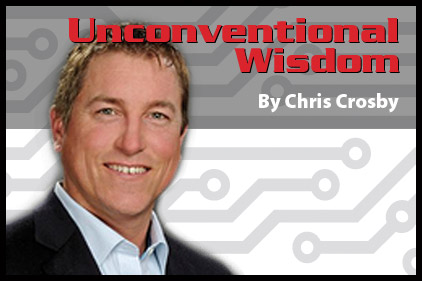Remember economics class? Unless you majored in the “dismal science,” I suspect that your recollection of what you learned might drop off pretty quickly after the basic concepts of supply and demand.
One thing you may remember from that class, however, is the law of diminishing returns. In our course, the professor conveyed this concept to us with cheeseburgers, which was a great way to get the attention of a bunch of always-hungry college students. The first cheeseburger = Delicious. Second cheeseburger = Yum. Third cheeseburger = Pardon me while I loosen my pants. Fourth cheeseburger = I think I’m going to be sick. It was a pretty effective way of illustrating the economic theory that after a certain point, even a good thing goes bad. Data centers can be like this sometimes. In our quest to achieve a goal, we sometimes venture into the four-cheeseburger zone.
It’s natural that we want to improve. It’s genetic. We all want to be more “something” — whether it’s to be better looking, thinner, less bald — and this desire carries over into our work life. We want things like a data center with 100% uptime, reduced energy costs, and lower power usage effectiveness (PUE). All highly desirable goals. But oftentimes we fail to temper our desires with a modicum of cheeseburger restraint. And, although we may achieve our objective, we neglect to ask ourselves if it was worth the cost.
A good example of this lack of understanding as to what is “good enough” is PUE. I’m sure the guys at The Green Grid never realized that when they produced a standard way to measure the efficiency of data center performance that a new pseudo-psychological condition called “PUE envy” would arise, but such is the law of unintended consequences.
For example, let’s say that a data center is projected to operate with a PUE of 1.35. The operator wants a lower figure so he can brag to his friends at the next meeting of his local AFCOM chapter. He does some quick analysis and determines that for just a $500/kW he can cool the facility with an evaporative waterside system that will reduce his PUE by at least a tenth of a point. For him, this decision is a no brainer. But as we often find in cases of attempting to satiate a need for immediate gratification, our hero has not incorporated a few key elements into his analysis. In this case, he neglected to factor in things like the fact that the waterside system will consume upwards of three million gallons of water per year in an area where water costs have been known to fluctuate due to sporadic draught conditions. By addressing the capital side of the equation without considering the long-term operational costs, he just upped his cost per kW to get a tenth of a point reduction in PUE.
Although our PUE example is simplistic, it illustrates a common mindset that occurs in data center design. Along with the desire for improved data center performance, many facilities are designed (due to a prior bad experience or barely concealed fear) to guard against the proverbial “black swan” event. Rather than design to achieve a level of predictable reliability, Tier III for example, these facilities are built to withstand events that in all likelihood will never happen. The end result are data centers hardened to the level of missile silos, with diesel fuel tanks bigger than the Queen Mary, switching procedures complex enough to give differential equations a run for their money, and enough generator capacity to power Cleveland.
In performing a “good enough” analysis, a company has to understand what level of risk and performance they believe is acceptable. With that established, they can then design their new facility to achieve those levels and no more. This requires discipline on the part of the organization, as mission creep is a common threat to the cost effectiveness of the design. The way to ensure that you’re performing an effective good enough analysis is to follow the law of diminishing returns.
Only by establishing the dollar cost of the initial implementation of a design element and then factoring in its ongoing operational expense can you determine if you’ve reached the point of wretched excess.
Optimizing data center performance is always the objective in any design phase, but good enough can easily become “I think I’m going to be sick.”



